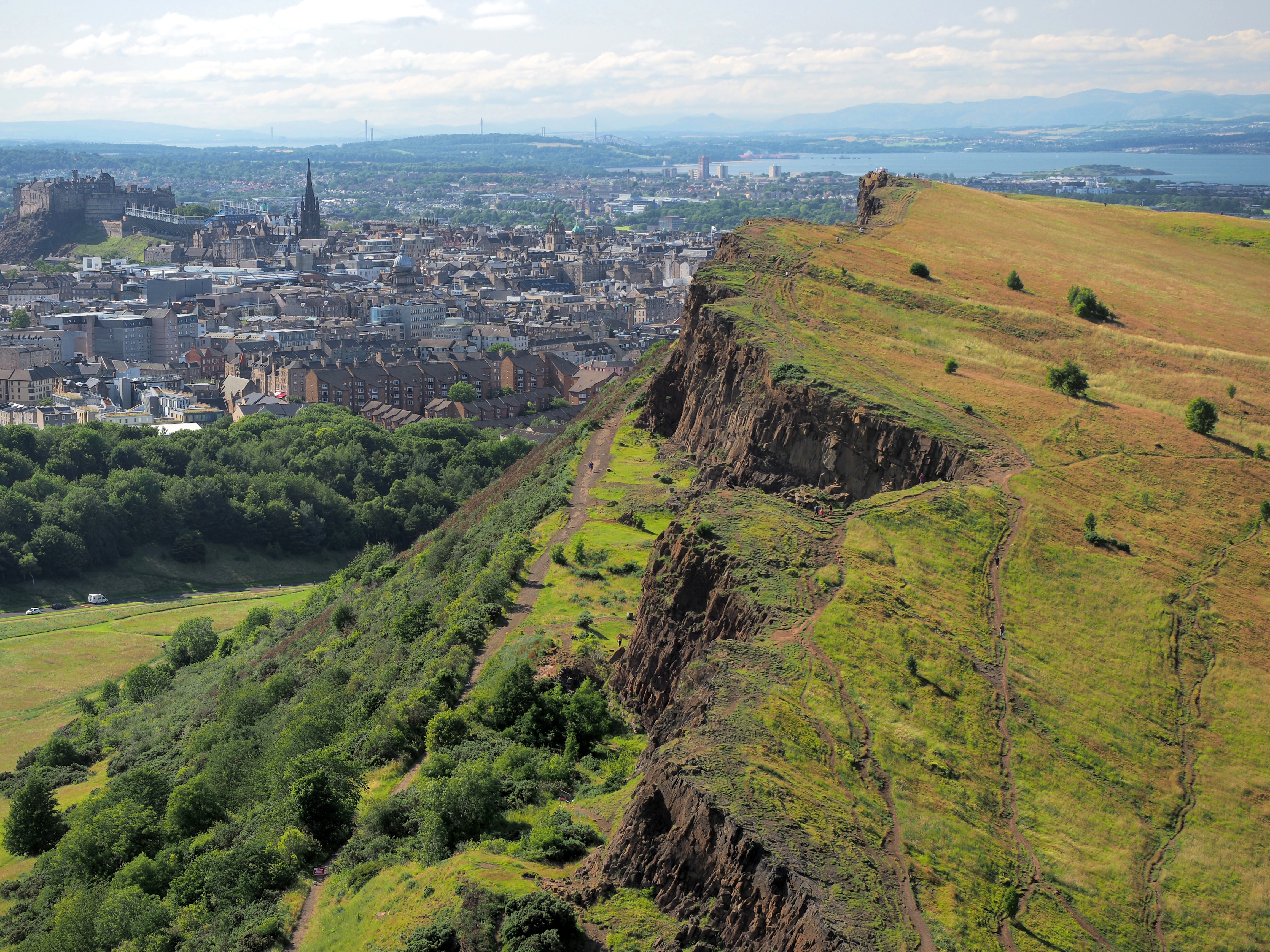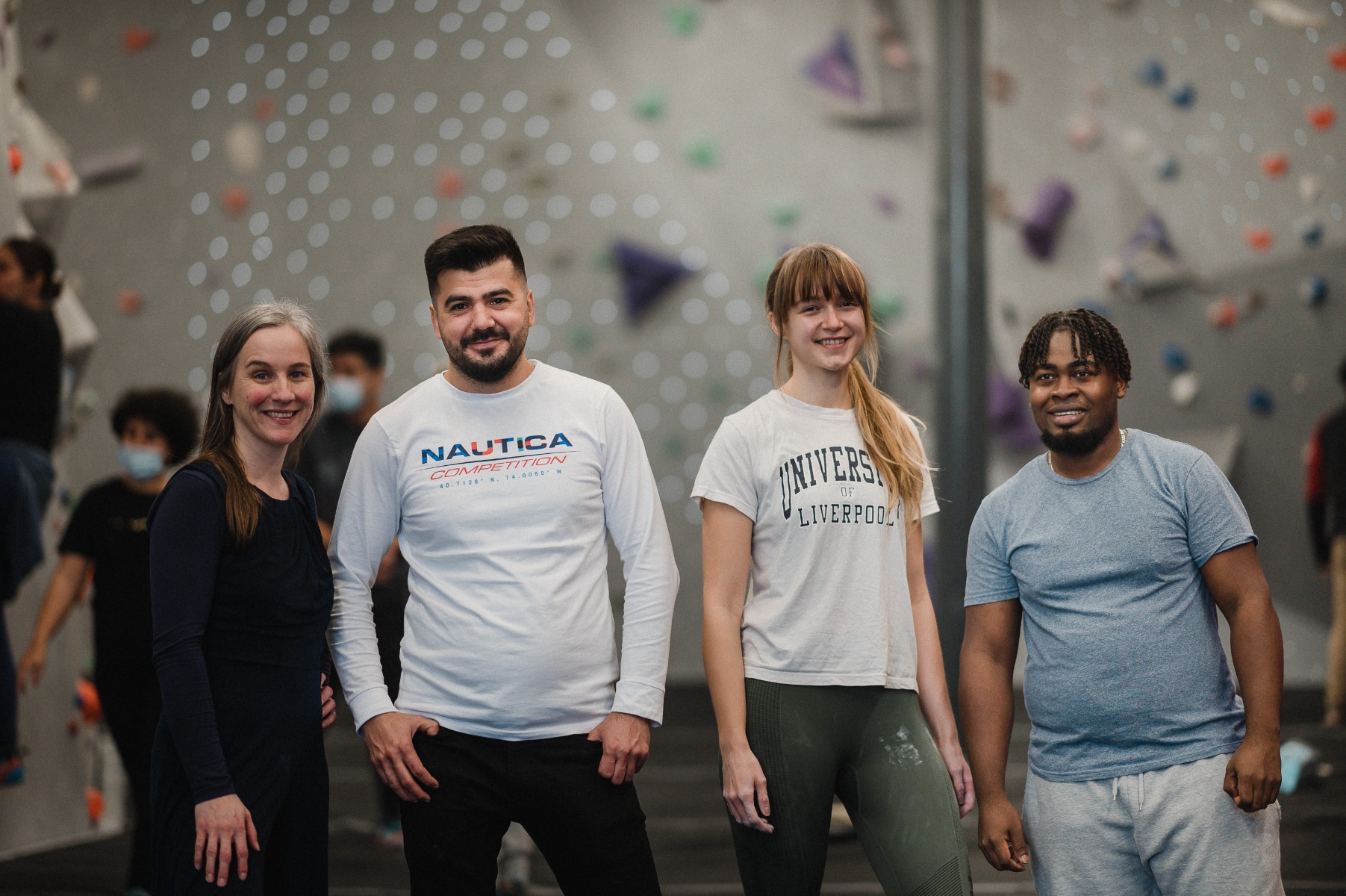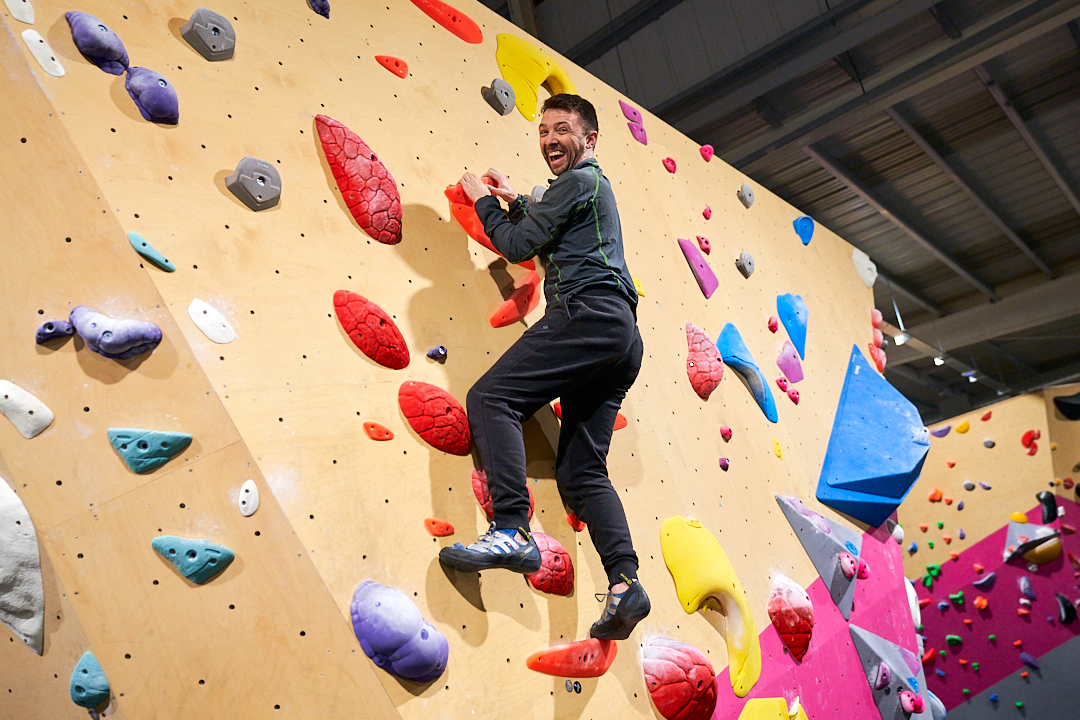Scotland’s capital city may not be known for world-class rock climbing, but its volcanic geology and colourful indoor scene have forged a dedicated and friendly community—plus some big names across all disciplines of the sport.

Photo credit: Journal of the Ladies’ Scottish Climbing Club (1929)
Over one-hundred years ago, the most popular climbing site in Edinburgh was Salisbury Crags, a crown of cliffs situated high above the city on the extinct volcano of Arthur’s Seat. A famous photograph taken in 1908 of two women, Lucy Smith and Pauline Ranken of the Ladies’ Scottish Climbing Club, scaling the crags dressed in long skirts, hats and sandals, is perhaps the earliest and most iconic depiction of climbing in Edinburgh.
The author Robert Louis Stevenson once described Arthur’s Seat as ‘a hill for magnitude, a mountain in virtue of its bold design.’ The Salisbury Crags outcrop, with scenic views across Edinburgh soon became a training ground for the mountains of Scotland, the Alps and beyond. Harold Raeburn, who was photographed in 1920 climbing the Crags in breeches and hobnail boots, went on to make first ascents on Ben Nevis and in the Alps before becoming the leader of the 1921 Everest expedition.
Post-war traditional climbing in the Edinburgh area was pioneered by members of the Edinburgh University Mountaineering Club and the Scottish Mountaineering Club, largely focusing on first ascents on Salisbury Crags before taking their skills into the Highlands and occasionally down south to England. Climbing sites along East Lothian’s coastline developed from the 1950s onwards, while the 1960s and 1970s were focused mainly on exploring new traditional routes on local quarries, including Rosyth and Ratho.
Fast-forward to the 1980s and ‘90s, when the advent of sport climbing and increasingly difficult moves on rock led to innovative training boards in cellars, attics and bedrooms with pieces of rock and wood for holds. Keen climbers lamenting the lack of local crags found urban alternatives: from the stone sea wall traverse at Newhaven to disused railway bridge traverses across the region.
1994 marked the origin of Edinburgh’s indoor climbing scene, with the opening of Alien Rock in Leith—Scotland’s first dedicated indoor centre—bringing homemade holds, mock-rock resin features, colourful walls, wacky fancy dress parties and fun competitions with a strong countercultural vibe. Local women including April Marr—of HBO’s The Climb series fame—and Sadie Renwick flew the flag for Scotland in national and international competitions as part of the British Climbing Team. The burgeoning bouldering scene was catered for with the opening of Alien Rock 2 in 2001, one of the first dedicated bouldering-only facilities in the UK.
In 2003, the Adventure Centre Ratho opened in Ratho Quarry, providing world-class roped climbing facilities and hosting international competitions, before relaunching as EICA: Ratho in 2007. Edinburgh University’s Pleasance Sports Complex climbing facility opened the following year, creating a student hub for the sport in its city-centre wall. After the closure of Alien Rock 2 in 2017, it was reincarnated that same year in the form of the modernised Alien Bloc in Broughton. To the south of the city, Eden Rock arrived in 2018, further diversifying the bouldering facilities on offer with a particular focus on youth and affinity groups.

Salisbury Crags, overlooking Edinburgh
Since 2018, access to Salisbury Crags - where Edinburgh’s climbing scene began - has unfortunately been banned by Historic Environment Scotland due to concerns about rockfall, further limiting outdoor options for locals. While campaigning and signing petitions against the cliff’s closure, locals have turned to training indoors and travelling further afield in search of rock.
In recent years, the development of climbing in Edinburgh has fostered both a strong community and some highly capable climbers with globally significant ascents to their names. Professional climber Will Bosi—the first Brit to climb a 9A boulder problem, the hardest boulder grade in the world to date—honed his skills here as a junior, alongside current resident all-rounder Robbie Phillips, and Hangar athlete and GB Climbing Team member Louise Flockhart. The local scene is just a small part of a wider Scottish climbing community, notable for some strong and talented athletes, but also for being an increasingly diverse group of climbers participating in a broad range of climbing disciplines at all levels.
Meanwhile, Edinburgh-based climbing organisations are also helping to make the sport more inclusive in the city and beyond. Urban Uprising helps at-risk and underprivileged young people to access climbing, while the Edinburgh Paraclimbing Club supports and encourages anyone with a disability who wants to give it a go. Soon, The Climbing Hangar Edinburgh will join other Hangar gyms around the UK in hosting Refugees Rock, a free monthly climbing club for refugees or individuals seeking asylum in the UK. Participants climbing alongside Hangar coaches and volunteers from the Hangar community known as “Boulder Buddies”.

Participants and boulder buddies at a Refugees Rock session in Liverpool
The Climbing Hangar’s arrival in Edinburgh will add a new chapter to the capital’s climbing history and the venue is earning an impressive reputation amongst locals as a fitness and social hub. The city might not have the best rock or the best weather, but you can always be sure of a warm welcome! Especially at TCH.

All smiles at The Climbing Hangar Edinburgh
Edinburgh based Natalie Berry an editor at UKC, a former Team GB climber and an avid runner. She's also a good friends and advocate of the team at The Climbing Hangar.
Hear more from Natalie and a variety of other voices from the climbing community by subscribing to email updates from The Climbing Hangar.

